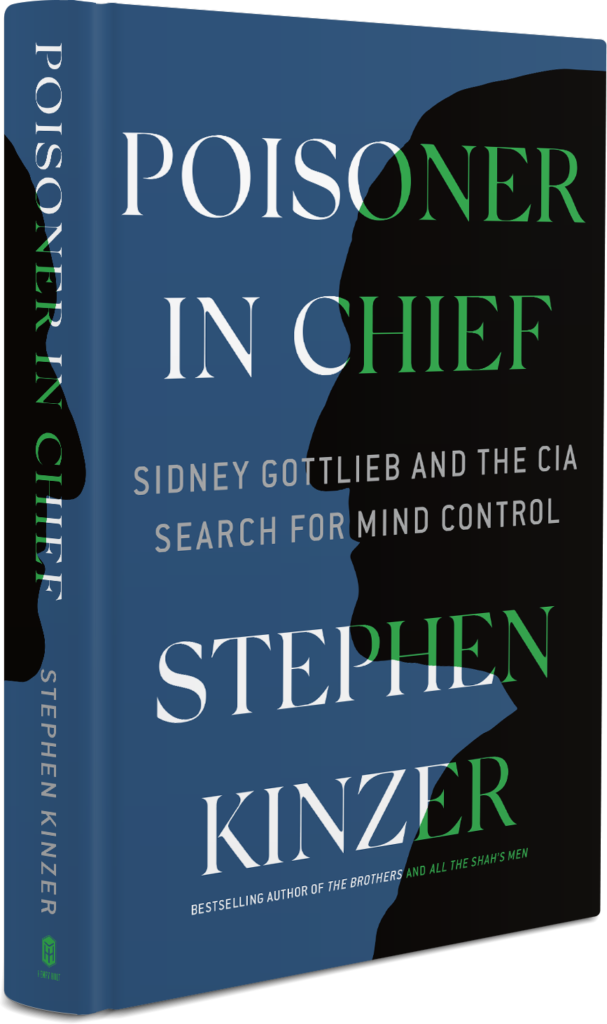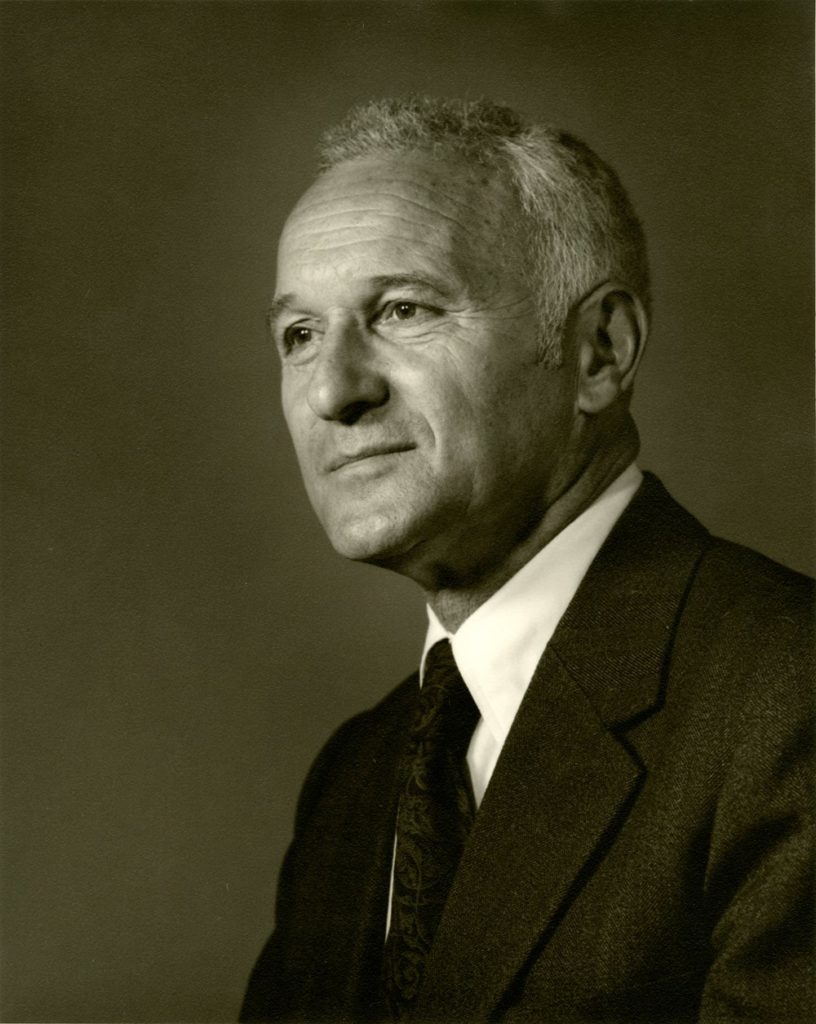by Stephen Kinzer
The visionary chemist Sidney Gottlieb was the CIA’s master magician and gentlehearted torturer—the agency’s “poisoner in chief.” As head of the MK-ULTRA mind control project, he directed brutal experiments at secret prisons on three continents. He made pills, powders, and potions that could kill or maim without a trace—including some intended for Fidel Castro and other foreign leaders. He paid prostitutes to lure clients to CIA-run bordellos, where they were secretly dosed with mind-altering drugs. His experiments spread LSD across the United States, making him a hidden godfather of the 1960s counterculture. For years he was the chief supplier of spy tools used by CIA officers around the world.
Stephen Kinzer, author of groundbreaking books about U.S. clandestine operations, draws on new documentary research and original interviews to bring to life one of the most powerful unknown Americans of the twentieth century. Gottlieb’s reckless experiments on “expendable” human subjects destroyed many lives, yet he considered himself deeply spiritual. He lived in a remote cabin without running water, meditated, and rose before dawn to milk his goats.
During his twenty-two years at the CIA, Gottlieb worked in the deepest secrecy. Only since his death has it become possible to piece together his astonishing career at the intersection of extreme science and covert action. Poisoner in Chief reveals him as a clandestine conjurer on an epic scale. Keep reading for an excerpt.

* * * * *
I Needed More of a Challenge
Years of wandering through distant lands, never knowing who or what lies around the next bend! It is a prospect to stir any adventurous soul. During the second half of the twentieth century, few American souls were as restless as that of Sidney Gottlieb. He spent his career deep inside Washington’s secret world. No one knew what he did, but he seemed to have earned a fulfilling retirement.
A more ordinary man might have been happy to spend his later years relaxing, reminiscing, or playing with grandchildren. Gottlieb, however, was a psychic voyager, far from anyone’s stereotype of the career civil servant. His home was an eco-lodge in the woods with outdoor toilets and a vegetable garden. He meditated, wrote poetry, and raised goats.
Gottlieb was just fifty-four years old when he retired. His career ended well, with a ceremony at which he was awarded a medal for distinguished service. Soon afterward, he and his wife sold their home and almost everything else they owned. In the autumn of 1973 they set off to seek humanitarian adventure and spiritual fulfillment. Their plan was marvelously vague: board a freighter in San Francisco and go wherever it was going. They had little interest in sightseeing or conventional tourism. The Gottliebs wanted to spend their older years serving the world’s neediest people.

Australia was their first stop. After a while there, they booked passage onward. A year of wandering led them to India. They learned of a hospital where victims of leprosy were treated and made their way there to volunteer. Living among the patients, they embraced the work of caring for society’s castoffs. Then, on a summer day in 1975, a message from Washington shattered Gottlieb’s world. Someone had discovered who he was. The United States Senate wanted to question him.
In two decades at the Central Intelligence Agency, Gottlieb had directed history’s most systematic search for techniques of mind control. He was also the CIA’s chief poison maker. His work had been shrouded in secrecy so complete as to render him invisible. Now he was being summoned home. He would be expected to account for his deeds, possibly even to appear in public. Never could he have imagined such a twist of fortune.
Soon after Gottlieb arrived in Washington, friends told him he needed a lawyer. One suggested Terry Lenzner, who had worked for the Senate Watergate Committee. Gottlieb called him. After they met, Lenzner wrote: “I was in contact with Dr. Death himself.”
For years Gottlieb had overseen medical experiments and “special interrogation” projects in which hundreds of people were tormented and many minds were permanently shattered. No one had ever plunged into this kind of work with more ambition or enthusiasm. Gottlieb justified it all in the name of science and patriotism—until the end, when his conscience finally broke through.
In the years after Gottlieb reluctantly returned to Washington, bits of information about his work began to emerge. He testified at two rounds of Senate hearings. Later he was forced to defend himself against lawsuits filed by people who had come to suspect that they were among his victims. He revealed almost nothing beyond the fact that before leaving the CIA he had destroyed all records of what he did. He was never convicted of a crime. His funeral in 1999 was private.
Enough had become known about Gottlieb to tantalize obituary writers. The New York Times published its obituary under the circumspect headline SIDNEY GOTTLIEB, 80, DIES; TOOK LSD TO C.I.A. It called Gottlieb “a kind of genius, striving to explore the frontiers of the human mind for his country while searching for religious and spiritual meaning in his life … He served two decades as the senior scientist presiding over some of the CIA’s darkest secrets.” The Los Angeles Times obituary began: “James Bond had Q, the wizard who supplied 007 with dazzling gadgets to deploy against enemy agents. The CIA had Sidney Gottlieb.”

Others were sharper. The iconoclastic website Counterpunch headlined its obituary PUSHER, ASSASSIN & PIMP: US OFFICIAL POISONER DIES. Another writer concluded that Gottlieb “takes his place among the Jekyll and Hydes of the American 20th century. Whether homesteading in Virginia’s verdant hills or safeguarding national security with another experimental torture session, Gottlieb stayed loyal to the positivist credo that rational exploration and productive discipline will lead to good.”
In Britain, where obituaries are famously unrestrained, the tone was biting. The Guardian called Gottlieb “everything you have dreamed of in a mad scientist in a pulp novel about the CIA—except that he was real.” The Independent said he was “living vindication for conspiracy theorists that there is nothing, however evil, pointless or even lunatic, that unaccountable intelligence agencies will not get up to in the pursuit of their secret wars.” The Times was even more vivid:
When Churchill spoke of a world “made darker by the dark lights of perverted science,” he was referring to the revolting experiments conducted on human beings by Nazi doctors in the concentration camps. But his remarks might with equal justice have been applied to the activities of the CIA’s Sidney Gottlieb … Indeed, what Gottlieb and his CIA henchmen did was only in degree different from the activities which had sent a number of Nazi scientists to the gallows at Nuremberg in 1946 … Drugs were not Gottlieb’s only weapon against the CIA’s enemies. He was also involved in assassination plots which at this distance read like something out of a Jacobean revenge play.
After the ripple of notoriety that followed his death, Gottlieb faded back into obscurity. A few historical studies mention his name. One reports that he was “known to some as the ‘dark sorcerer’ for his conjuring in the most sinister recesses of the CIA … With his club foot, he was perhaps too easy to caricature as a cross between a Bond villain and Dr. Strangelove, a scientist who always wanted to push further without worrying about the morality of where it all led.” In a book called The World’s Worst: A Guide to the Most Disgusting, Hideous, Inept and Dangerous People, Places, and Things on Earth, Gottlieb is named “the maddest mad scientist.” The author gives him grudging credit “for being smart enough to work for an organization that would not only allow him to poison and murder people with such aplomb, but would also protect him from the consequences awaiting any other sociopath.”
Gottlieb also turns up briefly in two modern American novels. Barbara Kingsolver’s portrait of life in the Congo, The Poisonwood Bible, refers to his role in the CIA plot to assassinate Prime Minister Patrice Lumumba. She writes that “a scientist named Dr. Gottlieb was hired to make a poison that would produce such a dreadful disease (the good doctor later testified at the hearings), if it didn’t kill Lumumba outright it would leave him so disfigured that he couldn’t possibly be a leader of men.” A character in Norman Mailer’s fevered history of American covert action, Harlot’s Ghost, discovers a letter from a fictional CIA officer who raves about Gottlieb and calls him “cosmic in scope, interested in everything.”
In the 1960s Gottlieb rose to the top of the Technical Services Division, which makes the tools that CIA officers use. Gottlieb ran a bustling gadget shop in Washington and directed the work of several hundred scientists and technicians scattered around the world. They crafted a mind-boggling array of spyware, from a rubber airplane to an escape kit concealed in a rectal suppository. Gottlieb and his team supplied tools of the trade to CIA officers operating in the Soviet Union and dozens of other countries.
“Under Gottlieb’s leadership, TSD built worldwide technical capacities critical to virtually all significant U.S. clandestine operations in the last third of the twentieth century,” one of his successors wrote. “Yet regardless of Gottlieb’s public service and personal charity, his name will always be inextricably linked to the ten-year MK-ULTRA program and the sinister implications of associated words such as drugs, LSD, assassination, and mind control.”
Copyright © 2019 by Stephen Kinzer
Stephen Kinzer is the author of ten books, including The True Flag, The Brothers, Overthrow, and All the Shah’s Men. An award-winning foreign correspondent, he served as the New York Times bureau chief in Nicaragua, Germany, and Turkey. He is a senior fellow at the Watson Institute for International and Public Affairs at Brown University, and writes a world affairs column for the Boston Globe. He lives in Boston.
